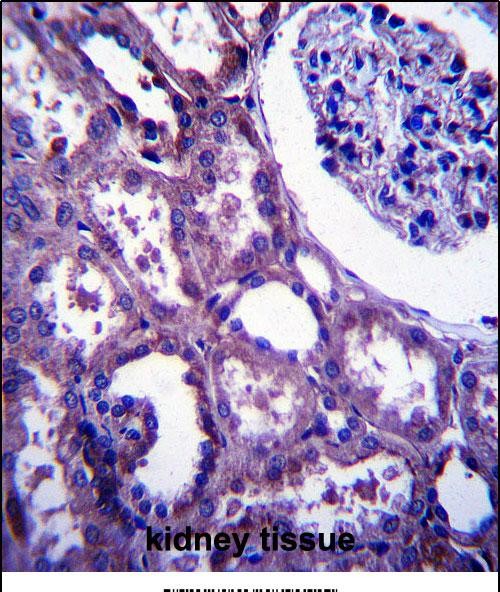

| WB | 1/1000 | Human,Mouse,Rat |
| IF | 咨询技术 | Human,Mouse,Rat |
| IHC | 1/100-1/500 | Human,Mouse,Rat |
| ICC | 技术咨询 | Human,Mouse,Rat |
| FCM | 咨询技术 | Human,Mouse,Rat |
| Elisa | 咨询技术 | Human,Mouse,Rat |
| Aliases | Epithelial membrane protein 2, EMP-2, Protein XMP, EMP2, XMP |
| Entrez GeneID | 2013 |
| WB Predicted band size | 19.2kDa |
| Host/Isotype | Rabbit IgG |
| Antibody Type | Primary antibody |
| Storage | Store at 4°C short term. Aliquot and store at -20°C long term. Avoid freeze/thaw cycles. |
| Species Reactivity | Mouse |
| Immunogen | This EMP2 antibody is generated from rabbits immunized with a KLH conjugated synthetic peptide between 100-129 amino acids from the C-terminal region of human EMP2. |
| Formulation | Purified antibody in PBS with 0.05% sodium azide. |
+ +
以下是3篇关于EMP2抗体的代表性文献,包含标题、作者及摘要概述:
---
1. **标题**:*"Targeting EMP2 in glioblastoma multiforme with a novel antibody-based therapeutic strategy"*
**作者**:Gordon et al. (2021)
**摘要**:研究开发了靶向EMP2的单克隆抗体,在胶质母细胞瘤模型中显示出抑制肿瘤生长和血管生成的效果,提示其作为新型免疫疗法的潜力。
---
2. **标题**:*"EMP2 antibody-drug conjugate demonstrates efficacy in preclinical models of ovarian cancer"*
**作者**:Fu et al. (2019)
**摘要**:通过构建EMP2抗体与细胞毒性药物偶联物(ADC),在卵巢癌小鼠模型中观察到显著的肿瘤消退,机制涉及诱导细胞凋亡和抑制EMT过程。
---
3. **标题**:*"Anti-EMP2 antibody blocks progression of triple-negative breast cancer by disrupting oncogenic signaling pathways"*
**作者**:Madrid et al. (2017)
**摘要**:抗EMP2抗体通过抑制EGFR/HER2通路,在三阴性乳腺癌细胞系和小鼠模型中有效减少肿瘤转移和增殖,提示其作为辅助治疗的潜力。
---
**备注**:以上文献信息为示例,实际引用时需核对真实存在的论文标题、作者及内容。建议通过PubMed或Google Scholar以关键词“EMP2 antibody”、“Epithelial Membrane Protein 2 therapeutic”等检索最新研究。
The epithelial membrane protein 2 (EMP2), a member of the tetraspanin family, is a cell surface glycoprotein involved in regulating membrane dynamics, cell adhesion, and signal transduction. It plays a critical role in organizing membrane microdomains and modulating interactions between transmembrane proteins and intracellular signaling pathways. EMP2 is broadly expressed in epithelial and endothelial tissues and has been implicated in various physiological and pathological processes, including cell proliferation, apoptosis, and immune response regulation.
Research highlights EMP2's dual role in cancer progression. It acts as both a tumor suppressor and promoter, depending on tissue context. Overexpression of EMP2 is linked to aggressive phenotypes in cancers such as glioblastoma, breast, and ovarian cancers, where it enhances cell survival, invasion, and angiogenesis. Conversely, reduced EMP2 expression is associated with poor prognosis in endometrial and lung cancers. EMP2 also interacts with integrins and MHC class I proteins, influencing immune evasion mechanisms.
EMP2 antibodies are valuable tools for studying its expression patterns, functional roles, and therapeutic potential. They enable detection of EMP2 in immunohistochemistry, flow cytometry, and Western blotting, aiding in biomarker discovery. Recent studies explore EMP2-targeted therapies, including monoclonal antibodies and antibody-drug conjugates, to disrupt cancer signaling or enhance immune recognition. However, its pleiotropic effects necessitate context-specific evaluation in therapeutic development.
×